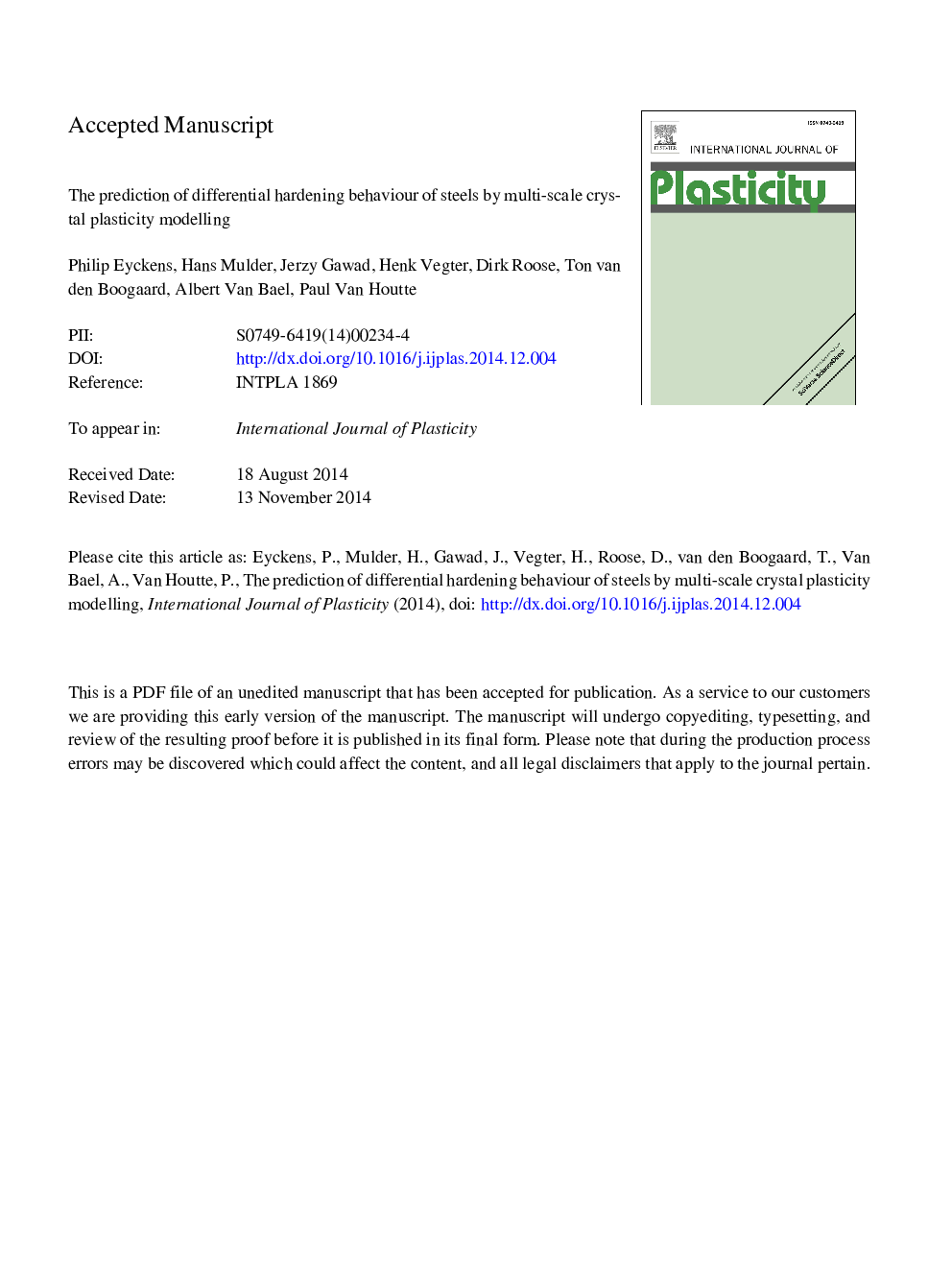| کد مقاله | کد نشریه | سال انتشار | مقاله انگلیسی | نسخه تمام متن |
|---|---|---|---|---|
| 7174979 | 1465600 | 2015 | 39 صفحه PDF | دانلود رایگان |
عنوان انگلیسی مقاله ISI
The prediction of differential hardening behaviour of steels by multi-scale crystal plasticity modelling
ترجمه فارسی عنوان
پیش بینی رفتار سخت افزای دیفرانسیل از طریق مدل سازی پلاستیکی کریستالی چند بعدی
دانلود مقاله + سفارش ترجمه
دانلود مقاله ISI انگلیسی
رایگان برای ایرانیان
کلمات کلیدی
موضوعات مرتبط
مهندسی و علوم پایه
سایر رشته های مهندسی
مهندسی مکانیک
چکیده انگلیسی
An essential aspect of materials modelling in the field of metal plasticity is hardening. The classical assumption of isotropic hardening in metal plasticity models is often too simplified to describe actual material behaviour. This paper focuses on the non-isotropic hardening termed differential hardening that is experimentally observed in many commercially available steel sheet materials. Crystal plasticity theory is used to study for a number of single-phase steels the differential hardening effect between uniaxial and equibiaxial loading conditions. We consider both the iso-strain assumption in polycrystal plasticity (Taylor model), and plasticity modelling with heterogeneous strain distribution across the polycrystal (Alamel model). In the latter case, the restriction of stress equilibrium along grain boundaries in selected locations throughout the microstructure dictates the nature and degree of the strain heterogeneity. In view of the potential wide applicability of the modelling approach, it has been chosen to keep the strain hardening law very simple, with only 3 fitting parameters. By doing so, differences in critical resolved shear stress (CRSS) between individual slip systems within a grain cannot be taken into account. Nevertheless, the results show significant improvement in differential hardening prediction by polycrystal plasticity modelling featuring strain heterogeneity over the microstructure, in comparison to results obtained with an iso-strain assumption. The accuracy improvement originates from the loading-dependent response in strain heterogeneity for textured steel materials. Texture evolution contributes additionally to the differential hardening effect. Steels with higher textural strength are predicted to show more differential hardening, in accordance to experiment.
ناشر
Database: Elsevier - ScienceDirect (ساینس دایرکت)
Journal: International Journal of Plasticity - Volume 73, October 2015, Pages 119-141
Journal: International Journal of Plasticity - Volume 73, October 2015, Pages 119-141
نویسندگان
Philip Eyckens, Hans Mulder, Jerzy Gawad, Henk Vegter, Dirk Roose, Ton van den Boogaard, Albert Van Bael, Paul Van Houtte,
